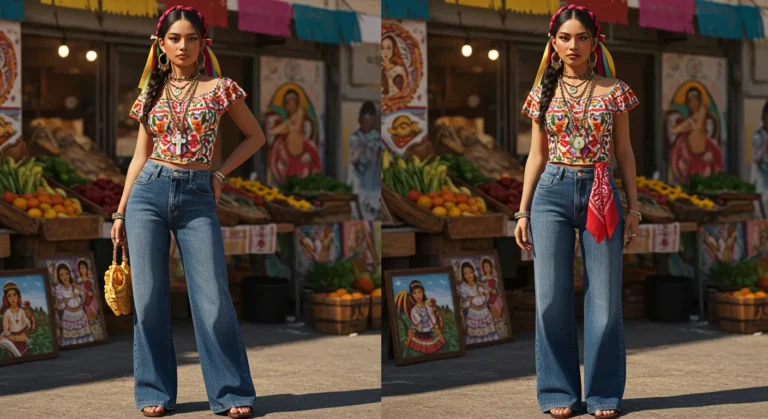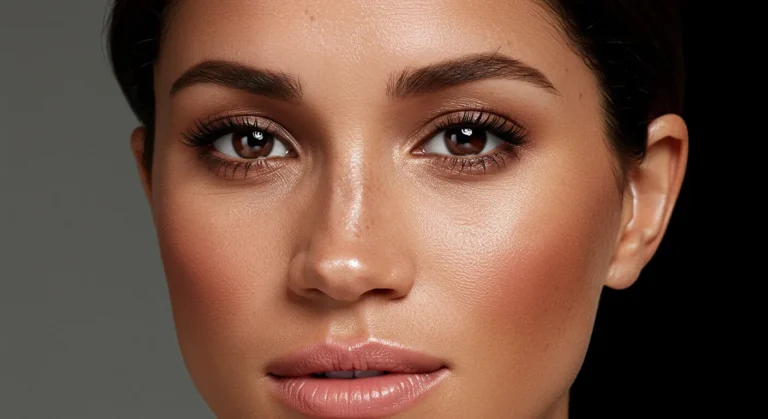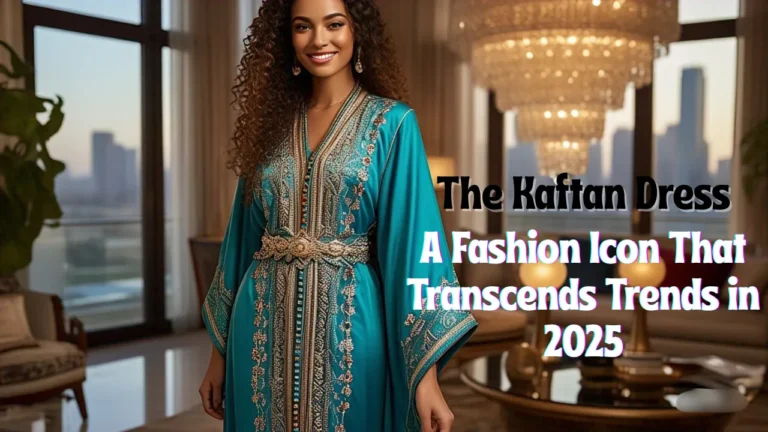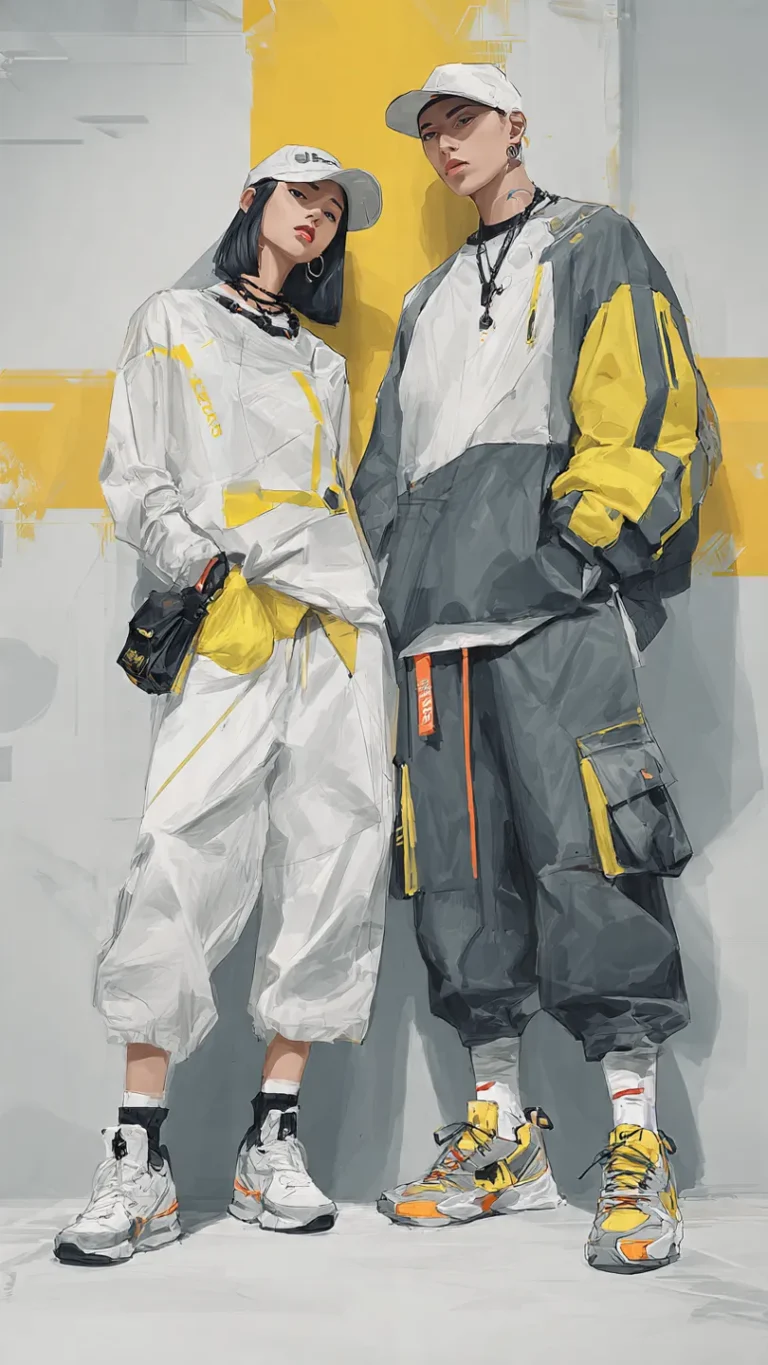best Vintage Vogue Covers A Timeless Iconic History in 2025
Introduction
There’s something magnetic about a vintage Vogue cover — the kind of allure that doesn’t fade with time but only becomes more fascinating. In an era dominated by scrolling feeds and digital-first visuals, these old magazine covers serve as cultural artifacts. They don’t just represent fashion; they tell a story of art, photography, identity, and social change across decades. Whether it’s a 1920s illustrated cover or a 1960s minimalist photo, vintage Vogue covers symbolize timeless style and the evolution of beauty standards.
So why are collectors, designers, stylists, and even casual readers still mesmerized by these aged pieces of editorial art? The answer lies in their unique blend of sophistication and storytelling. Long before Instagram aesthetics or AI-generated imagery, Vintage Vogue covers were hand-crafted expressions of high fashion, often created by the most influential artists, photographers, and editors of their time. Each one is a window into the mindset, mood, and message of the moment it was produced.
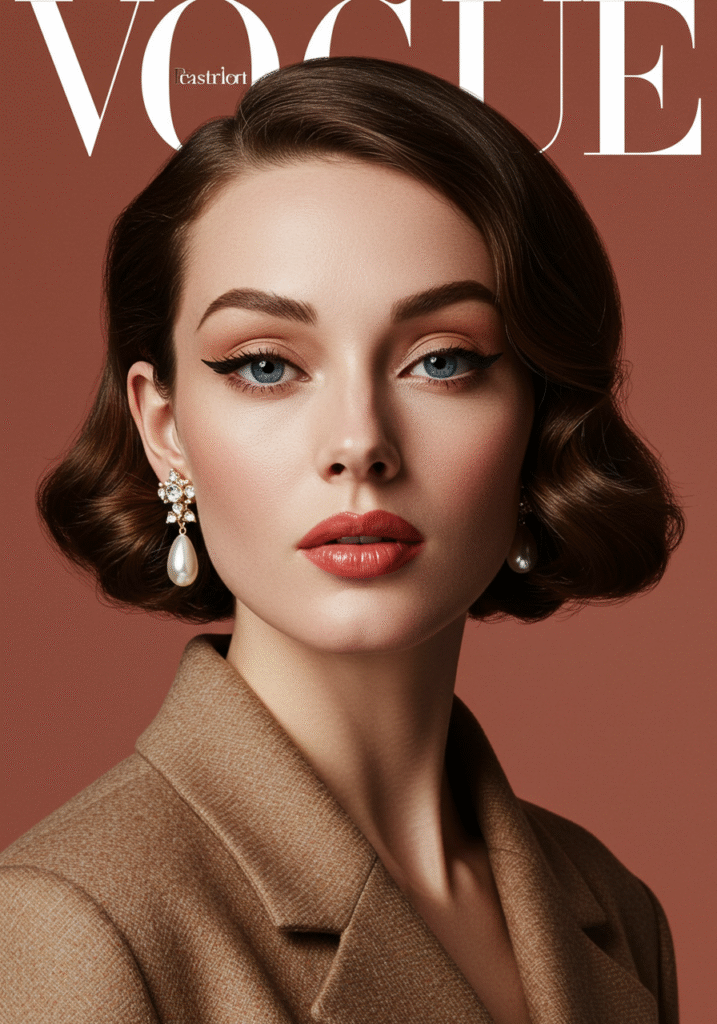
In today’s world, where Vintage Vogue fashion is having a massive resurgence, the charm of old Vogue covers is impossible to ignore. Not only are they trending on platforms like Pinterest and Tumblr, but they’re also being referenced in runway collections, makeup palettes, wall decor, and digital art. From editorial mood boards to personal style inspiration, vintage Vogue covers are back in the spotlight — and for good reason.
Their value isn’t just nostalgic. These covers offer critical insight into changing beauty ideals, design trends, photography styles, and political sentiments. Whether they reflect the flapper freedom of the 1920s or the bold femininity of the 1980s, these covers are more than just pretty pictures — they are fashion history frozen in time.
As we explore the legacy and significance of vintage Vogue covers in this article, we’ll dive into the artistic minds behind them, the cultural forces that shaped them, and how they continue to influence the modern fashion and art landscape. By the end, you’ll understand why these magazine pages are more than collectibles — they’re iconic expressions of style, culture, and creativity that continue to make headlines decades after their publication.
History of Vogue Magazine
Before we analyze the covers themselves, we must understand the legacy of Vogue magazine. Founded in 1892 as a weekly newspaper by Arthur Baldwin Turnure, Vogue began as a high-society journal covering fashion, etiquette, and social events for the New York elite. However, its transformation into a global fashion authority didn’t begin until Condé Montrose Nast purchased the publication in 1909. Under his leadership, Vogue evolved into a monthly magazine with a singular mission: to shape and reflect the world of fashion and culture.
Throughout the 20th century, Vogue’s influence grew from niche readership to global trendsetter. It wasn’t just a magazine — it was a lifestyle compass. Vogue didn’t simply report on fashion; it dictated it. This influence came through in its cover choices, featuring everything from high-society women to later supermodels and celebrities. Every cover was carefully curated to mirror the evolving taste of the times while also pushing boundaries.
Perhaps one of the most impactful changes occurred in the early 20th century when Vogue began hiring artists and illustrators to create bespoke cover artwork. This decision turned each cover into a collectible piece of art. The illustrated covers of the 1910s and 1920s were particularly striking — elegant, minimal, and often whimsical, evoking the surrealism and Art Deco styles that defined the early modernist period.
The cultural influence of Vogue accelerated in the post-war era. Under Diana Vreeland’s editorial reign in the 1960s, Vogue became more than fashion — it became a commentary on the times. With covers showcasing youth culture, political awareness, and bold beauty, the magazine cemented itself as a mirror to society’s most pressing conversations. Whether highlighting racial diversity or embracing avant-garde fashion, Vogue covers from this period were editorial statements as much as they were fashion features.
By the 1980s and 1990s, Vogue had firmly established itself as a global tastemaker. Under Anna Wintour’s leadership, the covers became more celebrity-driven, signaling a shift in what sold magazines — personality as much as design. Yet even as the aesthetics changed, the covers continued to shape fashion language around the world.
Today, vintage Vogue covers are celebrated for their artistic merit and social commentary. They stand as monuments of media history, charting how fashion has reflected — and even led — broader cultural movements, from feminism to diversity and environmental awareness. Vogue has never simply reported on fashion; it has defined it.
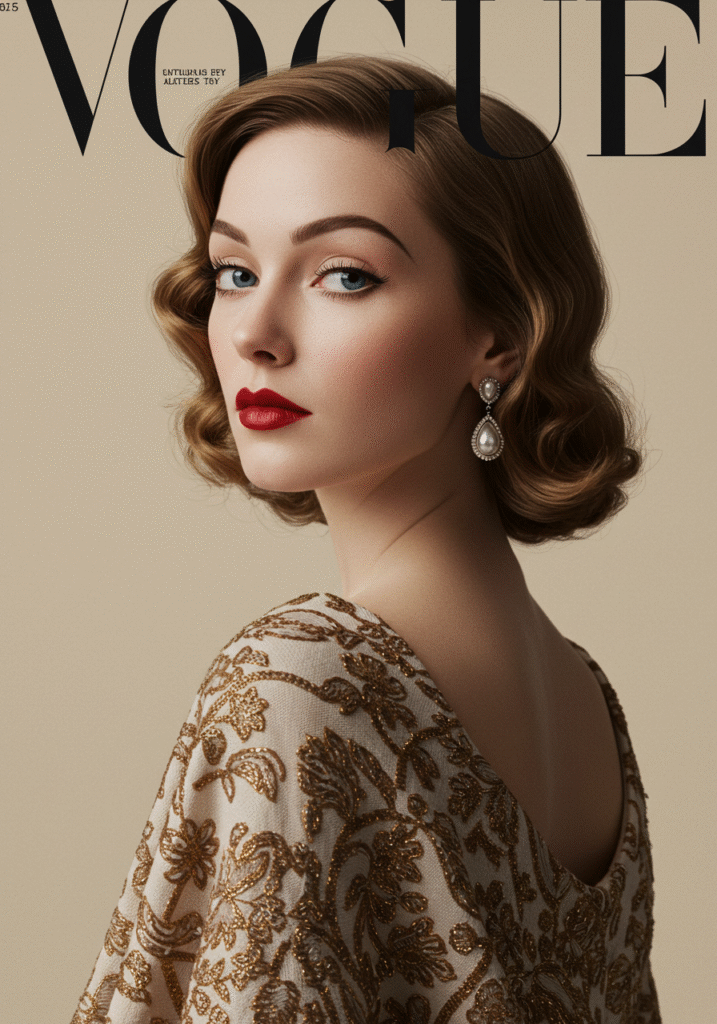
Golden Eras of Vogue
The story of vintage Vogue covers is best told through the lens of time. Each decade of Vogue’s existence brought with it distinct visual aesthetics, editorial philosophies, and social narratives. From delicate illustrations to bold photography, the covers reveal a fashion timeline as rich and nuanced as any museum exhibition.
1910s–1920s
In Vogue’s early decades, covers were exclusively illustrated. Artists like Helen Dryden and George Wolfe Plank created ornate, painterly scenes that captured the elegance and escapism of pre-war and post-war society. The Art Nouveau and later Art Deco influences were unmistakable — flowing lines, glamorous silhouettes, and imaginative themes dominated these covers. They exuded a romantic, almost theatrical charm that modern covers rarely match.
1930s–1940s
By the 1930s, photography began replacing illustration, although the shift was gradual. The covers started to feature real women in high fashion, shot with soft lighting and dramatic poses. These decades were defined by both glamour and austerity — reflecting the Great Depression and World War II. Vogue adapted by emphasizing resilience and elegance, with covers that often merged fashion with propaganda, hope, or patriotic symbolism.
1950s
The post-war economic boom brought a return to opulence. The 1950s covers often featured models in Dior’s “New Look,” with cinched waists and full skirts. Photographers like Irving Penn and Horst P. Horst elevated fashion imagery to fine art. Vogue covers in this era oozed cinematic beauty, capturing the golden age of haute couture. The women on the covers weren’t just models — they were icons of grace and sophistication.
1960s–1970s
These decades were among the most revolutionary in Vogue’s history. As the counterculture exploded, so did experimentation in fashion. Vogue responded with edgier, more dynamic covers. Under Diana Vreeland’s visionary eye, the 60s covers embraced youth, multiculturalism, and rebellion. By the 1970s, photographers like Richard Avedon and Helmut Newton were redefining what fashion looked like — raw, real, and bold. Covers featured Afros, denim, and androgyny — fashion was no longer just polished; it was political.
1980s–1990s
The 1980s ushered in the era of the supermodel. Names like Naomi Campbell, Linda Evangelista, and Cindy Crawford were mainstays on Vogue’s covers. The aesthetic was sharp, glamorous, and bold. By the 1990s, celebrities began replacing models — a move that would define much of Vogue’s modern identity. The magazine leaned heavily into luxury, status, and global fashion power.
Each of these decades contributed a unique voice to Vogue’s visual storytelling. When viewed as a collection, the vintage covers form a living archive of fashion history, each one a visual timestamp of creativity, culture, and commerce colliding.
Iconic Illustrators and Photographers
Behind every unforgettable vintage Vogue cover is a visionary artist — whether an illustrator wielding ink and brush or a photographer capturing fashion through a new lens. The magic of these covers lies not only in their subjects but in the creative geniuses who crafted them. These individuals transformed Vogue from a mere fashion magazine into an international art form, making its covers as collectible as gallery masterpieces.
The Illustrated Era
In the early decades of Vogue, especially the 1910s to the 1930s, illustrators were the heart and soul of the magazine’s visual appeal. Among the most influential was Helen Dryden, whose ethereal, delicate line work shaped the magazine’s visual identity during the 1910s and early 1920s. Her illustrations often captured Art Nouveau beauty and the romance of femininity, becoming synonymous with Vogue’s elite tone.
Following her was George Wolfe Plank, whose whimsical, vibrant scenes fused fashion and fantasy. His covers in the 1920s and 1930s are now considered iconic — they pushed the boundaries of magazine illustration with surreal, often theatrical flair. Similarly, Eduardo Benito, known for his geometric and Art Deco aesthetic, brought modernist precision and elegance that perfectly matched the roaring twenties’ opulence.
These illustrators weren’t just cover designers — they were fine artists whose works were celebrated in galleries and now hang in museums. Their contributions to Vogue were monumental, giving the magazine a visual language that was as stylish as the garments it showcased.
The Photography Revolution
As the 1930s ushered in the dominance of photography, a new wave of artists took center stage. Edward Steichen was one of the first major photographers to lend his eye to Vogue. His black-and-white portraits brought gravity and glamour to the publication.
The mid-century covers were graced by the genius of Irving Penn, whose minimalist, high-contrast style set a new standard. Penn’s ability to turn fashion into sculpture was unmatched — his covers were composed, clean, and utterly striking. Meanwhile, Horst P. Horst introduced sensuality and mystery, using light and shadow to evoke drama.
The later decades introduced fashion photography royalty like Richard Avedon, whose kinetic style captured models in motion and emotional intensity. His 1960s and 1970s covers defined an era of experimentation, with bold poses and offbeat settings.
Artistry That Endures
What unites these artists — illustrators and photographers alike — is their shared ability to create lasting visual statements. They treated each Vogue cover not as a commercial image but as a canvas for storytelling, emotion, and style. Their work continues to inspire today’s creatives, from graphic designers to fashion photographers, and forms the backbone of what makes vintage Vogue covers iconic and timeless.
Most Famous Vintage Vogue cover
Some Vogue covers transcend the pages they adorn — they become cultural milestones. These aren’t just admired; they’re remembered, referenced, and revered. Whether for their groundbreaking style, controversial impact, or sheer artistic brilliance, the most famous vintage Vogue covers have earned their place in fashion history.
December 1917 Helen Dryden’s Art Nouveau Dream
This cover, illustrated by Helen Dryden, is one of the earliest known masterpieces in Vogue’s archive. Featuring a flapper-style woman in a flowing dress against a soft winter landscape, it defined the elegance of the pre-Jazz Age. The composition and pastel palette evoked a dreamlike sophistication that set the tone for decades of Vogue covers to come.
July 1932 First Full-Color Photographic Cover
A landmark in Vogue history, this issue featured a swimmer with a red bathing cap captured by Edward Steichen. It was the first time Vogue used color photography on its cover — a radical departure from illustrations. This image was both modern and joyful, reflecting the shift toward realism and lifestyle-focused fashion.
April 1950 Jean Patchett by Irving Penn
This minimalist portrait of Jean Patchett wearing gloves and a veiled hat has become an icon of 1950s fashion photography. Shot by Irving Penn, the image was notable for its quiet elegance and stark composition. It wasn’t just a cover — it was a work of high art.
January 1953 Dovima in Dior
A classic shot of supermodel Dovima, one of the original haute couture muses, wearing Christian Dior and staring off with an icy gaze. The cover exuded Old Hollywood glamour and represented the rise of the fashion supermodel in post-war America.
October 1966
This British Vogue cover featuring Twiggy, the face of mod fashion, signaled a seismic shift. She wasn’t traditionally beautiful — and that was the point. With her big eyes, cropped hair, and childlike features, Twiggy became an instant icon of youth rebellion, redefining beauty standards globally.
August 1974
One of the most important covers in Vogue’s legacy, Beverly Johnson became the first Black woman to appear on the cover of American Vogue. This issue shattered racial barriers in the fashion industry and continues to be referenced as a landmark moment in the pursuit of diversity and inclusion.
Each of these covers is celebrated not just for their visual appeal, but for the moments they represent — in fashion, society, and publishing. They are permanent fixtures in museum exhibitions, collector’s libraries, and digital fashion archives, proving that the most powerful Vogue covers are more than stylish — they’re revolutionary.
Celebrities, Models, and Fashion Icons
Vintage Vogue covers would not be the same without the iconic faces that graced them. These weren’t just pretty women — they were trendsetters, cultural symbols, and sometimes even activists. Through the lens of Vogue, their appearances shaped entire fashion movements, launched careers, and reflected the evolving ideals of beauty, power, and femininity.
The Rise of the Supermodel
The 1950s introduced the notion of the “fashion model” as a recurring celebrity. Jean Patchett, with her striking features and sophisticated aura, appeared repeatedly throughout the decade, becoming one of the first cover darlings. Following her, Dovima exuded classic elegance, often dressed in couture gowns that captured the fantasy of high fashion.
By the 1960s, Vogue embraced the mod revolution with models like Veruschka and Penelope Tree, who brought a bohemian and androgynous aesthetic to the forefront. Their unconventional beauty expanded the definition of what was fashionable — tall, lanky, edgy, and bold.
Twiggy
No discussion of vintage Vogue icons is complete without Twiggy, who defined the look of the swinging sixties. Her short hair, exaggerated lashes, and petite frame symbolized youth rebellion, modernism, and British cool. Twiggy wasn’t just on the covers; she was the cover — a visual metaphor for cultural change.
Celebrities
Though earlier Vogue covers focused on models and aristocracy, by the 1970s and 1980s, celebrities began taking center stage. Actresses like Lauren Hutton, Ali MacGraw, and later Madonna appeared on covers that blurred the line between fame and fashion. These weren’t promotional appearances — they were statements of influence.
By the time Cher and Grace Jones appeared on Vogue covers, they weren’t just musicians or performers — they were fashion figures. Their bold looks, unapologetic femininity, and style experimentation made them ideal cover stars for a magazine always looking to push limits.
Black Excellence and Diversity
The 1970s and 80s also marked the arrival of more diverse beauty icons. Beverly Johnson broke barriers in 1974, followed by Iman, who brought regal elegance and international flair to fashion. Their presence wasn’t just symbolic — it was revolutionary, challenging long-standing industry biases and inspiring a new generation of models.
These cover stars did more than sell magazines. They captured cultural moments. They helped Vogue evolve from a fashion catalogue into a cultural barometer — measuring and shaping the tastes, values, and dreams of generations.
The Artistic Aesthetic
Beyond the faces and fashion, what makes vintage Vogue covers truly unforgettable is their artistic design language. From the illustrated elegance of the 1910s to the photographic boldness of the 1980s, each element — fonts, colors, layout, spacing — was a deliberate choice that told a story. These visual decisions created a signature Vogue aesthetic that continues to inspire not only modern magazine design but also branding, advertising, and even social media layouts today.
Typography
Let’s start with the iconic VOGUE logo — perhaps one of the most recognized magazine mastheads in the world. Surprisingly, its basic form has remained relatively unchanged since 1892, a testament to its timeless appeal. The serif font, strong and elegant, has acted as a visual anchor even as cover styles evolved drastically over the decades.
In the early 20th century, especially during the Art Deco era, you’ll notice subtle shifts in the Vogue logo — elongated serifs, customized spacing, or playful shadowing to match the artistic tone of the illustrated backgrounds. However, by the time photography took over in the 1930s and 1940s, the logo began serving as a structural frame, carefully positioned to allow the imagery to take center stage without losing brand identity.
In more experimental eras, such as the 1960s and 1970s, the logo would occasionally appear behind the subject’s head — a daring move that became a visual shorthand for editorial confidence. This trend continues today and was first pioneered by Vogue when fashion photography began to break the “rules” of conventional cover design.
Color Palettes
Vintage Vogue covers are visual timelines of color psychology. The pastel and muted tones of the early 1900s reflected refined elegance and feminine softness. These colors echoed watercolors and oil paints, in line with the illustrative art styles of the period.
During the Great Depression and WWII, colors grew darker, more serious — navy blues, deep reds, and grayscale imagery dominated, adding a sense of gravitas. The post-war 1950s brought back bright, optimistic hues: cherry reds, baby blues, and buttery yellows — symbolic of prosperity and renewal.
In the psychedelic ’60s and earthy ’70s, Vogue embraced the culture with neon accents, warm browns, oranges, and even metallic finishes. Covers of this era reflected more than fashion — they mirrored the emotional temperature of the decade.
The 1980s and early 1990s took a turn toward gloss and glamour, favoring bold contrasts, high-saturation images, and modern layouts that often used white space and tight framing for maximum visual impact.
Layout and Composition
One of the most captivating elements of vintage Vogue covers is the expert composition. Early covers were filled with detail — every inch used for storytelling. But as photography matured, composition became more minimal, focusing on strong poses, emotional expressions, and clean framing.
Vogue’s visual language was never static. Sometimes the subject stares directly at the viewer — a powerful confrontation of gaze. At other times, she’s in profile, mid-motion, or even blurred — capturing emotion over perfection. This creative range helped Vogue stand apart from other fashion publications and established the cover as an artistic medium.
Today, creative directors and digital designers reference vintage Vogue layouts for inspiration. The balance of text, image, color, and white space is studied in design schools and mimicked in advertising. These covers aren’t just part of fashion history — they are benchmarks of editorial excellence and visual storytelling.
Collecting Vintage Vogue Covers
In the world of magazine collecting, vintage Vogue issues hold a special place. They are not only admired for their artistic and cultural significance but are also considered valuable collectibles with real investment potential. For collectors, fashion enthusiasts, and design lovers, owning a vintage Vogue cover is like owning a piece of editorial history — one that tells a story of elegance, rebellion, and design mastery.
Why People Collect Vintage Vogue
The motivations behind collecting vary. For some, it’s an aesthetic choice — framing a 1950s cover in a Parisian-themed living room adds instant sophistication. For others, it’s a deeper passion for fashion history and visual storytelling. And then there’s the investment aspect: rare vintage covers can fetch hundreds or even thousands of dollars depending on their condition, rarity, and cultural relevance.
Collectors often seek firsts — like the first full-color photographic cover from July 1932, or the August 1974 cover featuring Beverly Johnson, the first Black woman on the cover of American Vogue. Others focus on specific decades, illustrators, or models, building themed collections that reflect a certain style or era.
How to Identify Valuable Issues
Not all vintage Vogue covers are created equal. Several factors determine the value of a specific issue:
- Date and Era: Pre-1950s issues are generally more valuable due to scarcity.
- Condition: Mint condition magazines with no rips, stains, or discoloration are prized.
- Cultural Significance: Covers marking important fashion events, diversity milestones, or groundbreaking design are highly sought after.
- Cover Star: Issues featuring celebrities, supermodels, or debut cover stars add value.
- Limited Editions: Some international editions (e.g., French, Italian, British Vogue) released limited runs with region-specific content, making them collector’s gems.
You’ll also find increased value in first editions, anniversary issues, and those with notable artistic contributors, such as covers shot by Avedon or Penn, or illustrated by Dryden.
Where to Buy Vintage Vogue Covers
Thanks to growing demand, there are more options than ever to find and purchase these iconic issues:
- Antique Bookstores – Especially those specializing in fashion or art books
- eBay and Etsy – Widely used for rare, international, and collectible copies
- Specialty Online Retailers – Websites like Fashion Illustration Gallery or Vogue Archive Shop offer authenticated items
- Auctions and Estate Sales – Sotheby’s and Christie’s occasionally list vintage Vogue covers in their collectible print categories
- Digital Archives – While not physical collectibles, platforms like Vogue Archive allow access to high-res scans dating back to 1892 — great for researchers and designers
For those who wish to display them, covers can be professionally matted and framed, making them timeless décor pieces that double as investments.
A Collectible
Whether you’re a seasoned collector or just starting, vintage Vogue covers offer a unique intersection of fashion, art, and history. With each issue, you’re not just collecting paper — you’re preserving a visual legacy that continues to influence design and fashion decades later.
How Vintage Vogue Covers Influence?
In the fast-paced world of TikTok trends and AI-generated campaigns, you might think that vintage imagery has taken a back seat. But the opposite is true — vintage Vogue covers are influencing modern fashion and media more than ever. From luxury brand campaigns to digital aesthetics, their legacy is deeply embedded in today’s visual culture.
Fashion Designers
Many top designers today credit old Vogue covers as key sources of inspiration. Whether it’s the silhouettes, the makeup styles, or even the composition of the imagery, these covers offer a treasure trove of ideas. Brands like Gucci, Dior, and Chanel regularly reference past decades in their seasonal collections, often pulling direct influence from 1940s elegance or 1960s rebellion as captured by Vogue.
Designers like Marc Jacobs and John Galliano have openly discussed building mood boards from vintage Vogue imagery. This trend has sparked a renewed appreciation for older techniques like hand-drawn design, slow fashion, and sustainable materials — echoing the craftsmanship that defined earlier fashion eras.
Resurgence in Editorial Styling
Modern magazines and fashion campaigns are increasingly mimicking the style of vintage Vogue covers. You’ll notice more natural lighting, film photography, dramatic posing, and less retouching — all hallmarks of vintage imagery. Fashion editorials in Harper’s Bazaar, W, and even Vogue itself have returned to this aesthetic to stand out in a digital world saturated with sameness.
There’s also a growing revival of vintage beauty trends — think bold red lips from the 1940s, Twiggy-inspired eye makeup from the 60s, or glossy hairdos of the 80s — being used in contemporary runway shows and beauty campaigns.
Digital Media and Aesthetic Curation
The influence of vintage Vogue has spilled into social media in a big way. On Pinterest, Instagram, and Tumblr, entire feeds are dedicated to archiving, analyzing, and celebrating vintage Vogue art. Designers, content creators, and influencers use this aesthetic to build their personal brands — think mood boards full of 1950s elegance or Art Deco fonts paired with modern captions.
Apps like Canva and VSCO now include templates and filters inspired by the color grading and layouts of vintage magazines. Even TikTok users recreate vintage Vogue covers with DIY photo shoots and styling tips — bringing the old into the new in a fresh and engaging way.
Why It Still Matters
Vintage Vogue covers are more than nostalgia. They remind us of a time when fashion was deliberate, visual storytelling was sophisticated, and magazine culture had the power to shape society. Their enduring presence in modern fashion and media speaks to their timeless visual grammar, which transcends trends and technology.
In a world obsessed with immediacy, these covers teach us about lasting influence, artistic legacy, and the power of great design to remain relevant across generations.
FAQs
Why are vintage Vogue covers considered so valuable?
intage Vogue covers are valuable for their historical significance, artistic excellence, and cultural insight. Each cover reflects the aesthetic, mood, and social values of the time it was produced. From pioneering illustration techniques to groundbreaking photography, these covers are often created by renowned artists and photographers, making them collectible pieces of visual and fashion history.
What is the most famous vintage Vogue cover of all time?
While “most famous” is subjective, some of the most iconic covers include:
July 1950 (Model Jean Patchett) by Irving Penn — a symbol of post-war elegance.
October 1932 — Vogue’s first color photographic cover, shot by Edward Steichen.
March 1947 — Reflecting the New Look by Christian Dior, an era-defining moment.
Each of these covers not only marked a visual breakthrough but also influenced the direction of fashion globally.
Where can I find or purchase vintage Vogue covers?
You can find vintage Vogue covers in:
Online marketplaces such as eBay, Etsy, or Chairish.
Antique bookstores or vintage magazine shops.
Art auctions and estate sales that specialize in fashion memorabilia.
Digital archives like Vogue’s official archive (for viewing and downloading licensed images).
Always verify authenticity if you’re purchasing, especially for covers dated before the 1950s.
Are vintage Vogue covers a good investment?
Yes particularly for rare, limited edition, or milestone issues. Covers from the early 1900s, World War II-era editions, and those created by famous artists or photographers can appreciate in value. Framed versions in good condition are especially sought-after by collectors and interior designers.
What makes a Vogue cover “vintage”?
Typically, any Vogue cover produced before the 1980s is considered vintage. However, in collector circles, the most prized are those from the 1910s to 1970s — especially illustrated covers and those from landmark fashion moments. These covers are valued for their rarity, artistic craftsmanship, and condition.
Conclusion
Vintage Vogue covers are more than just collectible pieces of art — they are historical timestamps that reflect the shifting sands of style, social consciousness, gender expression, and the evolution of modern media. From the softly hand-drawn illustrations of the early 1900s to the edgy photographic compositions of the 1970s, each cover tells a story. They are visual narratives that blend fashion, politics, art, and culture into a single frame, defining beauty standards while also subtly challenging them.
In today’s age, where magazine sales are largely digital and attention spans are short, there is something profoundly grounding about flipping through or gazing upon a vintage Vogue cover. These covers demand more than a scroll — they ask for time, interpretation, and appreciation. Whether you’re an artist, designer, historian, collector, or fashion enthusiast, vintage Vogue covers offer a unique lens through which to explore not only the aesthetics of different decades but the cultural commentary embedded in each artistic decision.
What makes these covers even more valuable today is the resurgence of appreciation for analog detail. In a world dominated by filters and AI-generated perfection, vintage Vogue covers remind us of the raw, authentic beauty of the past — hand-drawn elegance, minimal retouching, natural lighting, and deeply intentional styling. They showcase how creativity thrived even in the absence of modern tools, and how fashion communicated with the world through subtle sophistication.
Moreover, they play a crucial role in the conversation around sustainability. As fast fashion is being questioned, many are turning to vintage style — not only in clothing but also in aesthetics. Collecting vintage Vogue covers becomes an act of preservation, a way of honoring the slow, deliberate craftsmanship that is often lost today. By showcasing them, curating them, or simply being inspired by them, we’re keeping an artistic legacy alive.
In essence, vintage Vogue covers are not just a look back at what was — they are timeless sources of inspiration that continue to influence modern aesthetics. Designers reinterpret them, photographers emulate them, and fashion houses pay homage to them in seasonal campaigns. They are the soul of fashion history — graceful, bold, and enduring.
So, whether you’re decorating a studio with framed covers, citing them in academic work, or simply scrolling through an online archive late at night, know this: you’re not just viewing art — you’re engaging with an icon. And that is the true magic of vintage Vogue covers.



